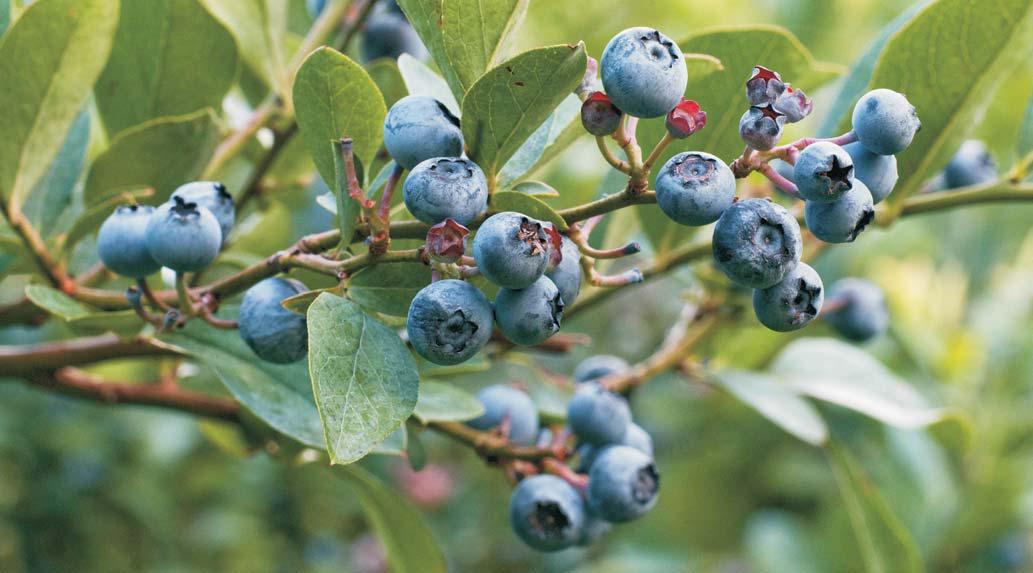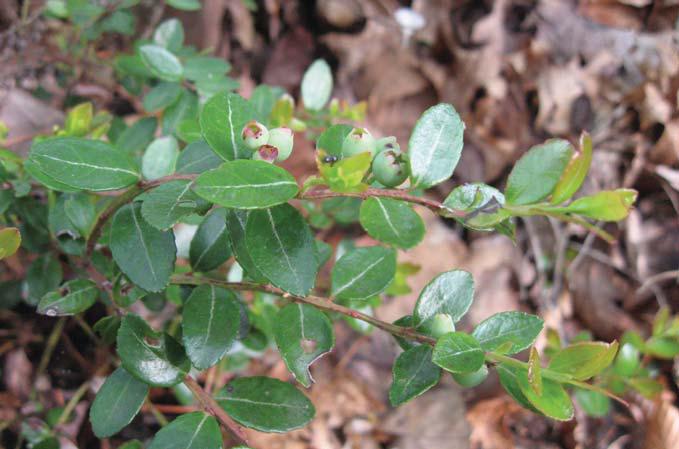Essayer OR - Gratuit
BLUEBERRIES & CO.
Horticulture
|September - October 2024
Members of the genus Vaccinium provide sweet flavor, health benefits and beauty in the garden
-

ISN'T IT THRILLING how the simple things we like as children often unfold into worlds of information and meanings as we mature? Take blueberries, for instance.
They were a special treat when I was five years old-something mom brought home from the King Kullen market to our neat and tidy neighborhood on Long Island's north shore. But then, when I was eight, my parents pulled up stakes and moved our family to the wilds of the Pocono Mountains in Pennsylvania.
Not long after moving, I lay in my bed one night and watched as fire consumed the slopes of Blue Mountain, a terminal moraine about two miles from our house. I thought it must be a disaster, but my dad explained that the fires were set deliberately. Local folks set the fires, he said, to clear out underbrush and tree growth so that more sunlight could reach the ground and stimulate the growth of wild blueberries that were a source of income for them.
 Later, in high school biology, the teacher said that commercial blueberries were developed in the early 20th century from wild species in marshy lands on the Pocono Plateau and in the southern New Jersey pine barrens. The Pennsylvania species was mostly the high-bush blueberry, Vaccinium corymbosum, which can reach seven feet tall, while in the poor sandy soils of southern New Jersey, the berries were mostly lowbush blueberries, V. pallidum or V. angustifolium, which grow from 18 to 30 inches tall.
Later, in high school biology, the teacher said that commercial blueberries were developed in the early 20th century from wild species in marshy lands on the Pocono Plateau and in the southern New Jersey pine barrens. The Pennsylvania species was mostly the high-bush blueberry, Vaccinium corymbosum, which can reach seven feet tall, while in the poor sandy soils of southern New Jersey, the berries were mostly lowbush blueberries, V. pallidum or V. angustifolium, which grow from 18 to 30 inches tall.Since these wildings entered commerce, breeders have developed many crosses between high-bush and low-bush species, generally categorized as half-high blueberries, and heat-tolerant rabbit-eye blueberries (Vaccinium virgatum) that do well in the southern states. There are hundreds of named varieties descended from native North American species and thousands around the world. And that's just for blueberries.
Cette histoire est tirée de l'édition September - October 2024 de Horticulture.
Abonnez-vous à Magzter GOLD pour accéder à des milliers d'histoires premium sélectionnées et à plus de 9 000 magazines et journaux.
Déjà abonné ? Se connecter
PLUS D'HISTOIRES DE Horticulture

Horticulture
NORTH FLORIDA FLORA
The Jacksonville Arboretum & Botanical Gardens offers an education in the area’s interesting ecosystems
9 mins
Summer 2025

Horticulture
GOLD MEDAL PLANTS
Podium toppers for hot, humid gardens
7 mins
Summer 2025

Horticulture
Success WITH Squashes
All you need to know to grow hearty winter squash and pumpkins
5 mins
Summer 2025

Horticulture
HOTEL CALIFORNIA
A look at the unique climate and keystone plants that form Ecoregion 11's habitats
5 mins
Summer 2025
Horticulture
Evening Romance
Enhance your garden with nocturnally scented flowers.
10 mins
Summer 2025

Horticulture
GARDEN COLLECTIONS
I HAVE TOO MANY hand pruners. I started with one. Lost it. Bought another, then found the first.
2 mins
Summer 2025

Horticulture
BUMBLE BEE ATLAS
Gardeners can help scientists understand bumble bee populations
3 mins
Summer 2025

Horticulture
MIKE BERKLEY
Wild about native plants
8 mins
Summer 2025

Horticulture
Hello Hummingbirds
How to make your garden hospitable to these high-energy fliers
5 mins
Summer 2025

Horticulture
Pots of Leaves
Foliage plants simplify container design and care
4 mins
Summer 2025
